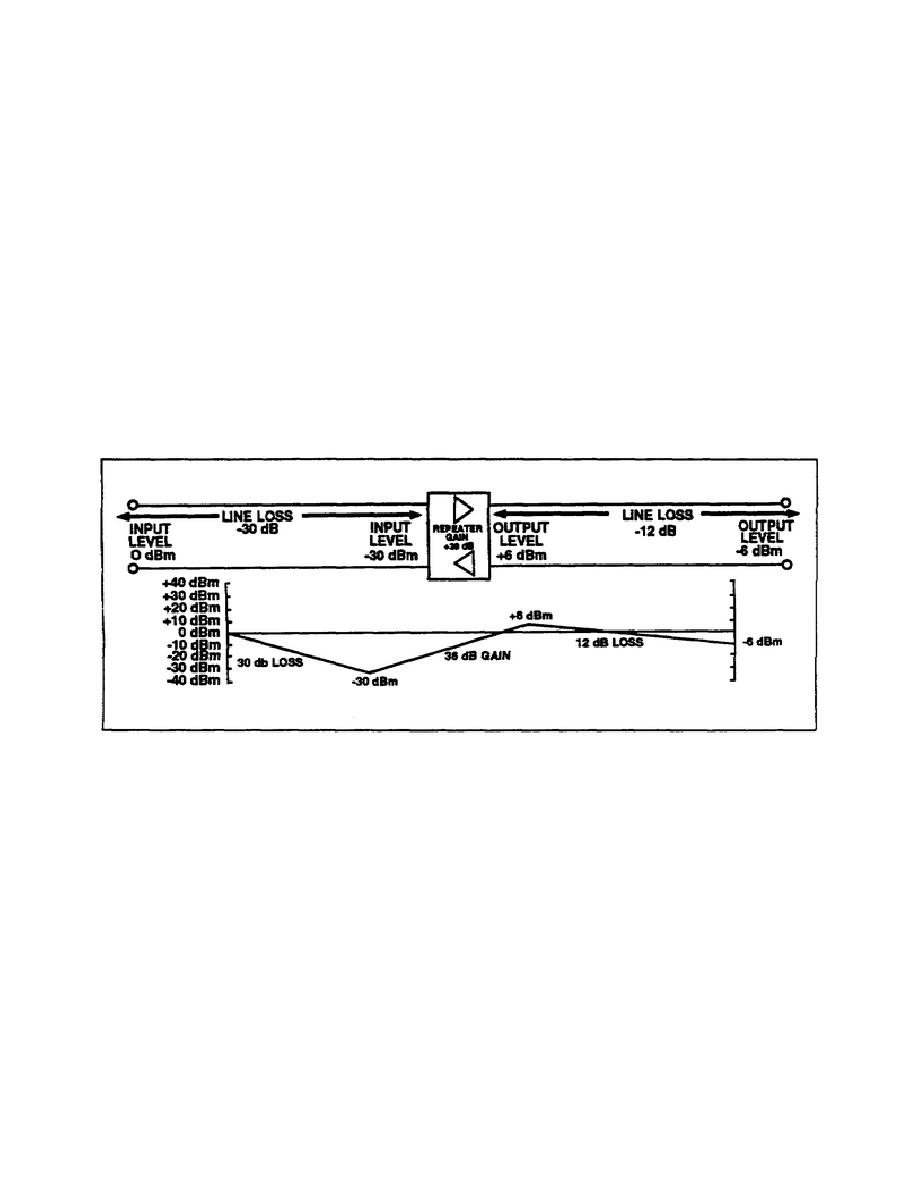
standard reference level used in telephone work is 1 mW which is expressed as dBm. Remember, whenever you
see 0 dBm, it means 1 milliwatt of power.
9. How to use this reference level.
a. The easiest way to find out is to look at what happens in an average telephone system like that shown in
figure 3-13.
b. In the figure, you see a telephone system with a graph (energy level diagram) below it. The graph
shows what is happening to the voice power as it travels along the system. You can see that the input level is 0
dBm (meaning 1 mW). The first section of line extending from the line input to the repeater gives a loss of 30
dB. This brings the power level at the repeater input down to -30 dBm (30 dB below the reference level of 0
dBm).
c. Then the power represented by -30 dBm (actually .001 mW) enters the repeater and becomes amplified.
The repeater provides a gain of 36 dB. This brings the power at the output of the repeater up to a new level of
+6 dBm (which represents 4 mW).
Figure 3-13. How dBm is used in a telephone system.
d. Next, as the power moves toward the end of the line, it suffers another loss of 12 dB. This gives a final
output level of -6 dBm (actual power is .25 mW).
10. Conclusion.
a. You can see that dB losses and gains are added algebraically. That is, a +36 dB and a -30 dB gives a +6
dB. And a +6 dB and a -12 dB gives a -6 dB.
b. Notice that dB and dBm are not used in the same way. The dB is used to express the amount of loss or
gain. Then, after the loss or gain has taken place, dBm is used to express the new power level arrived at because
of the loss or gain.
3-35
SS0031



 Previous Page
Previous Page
